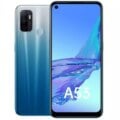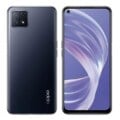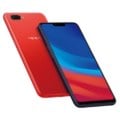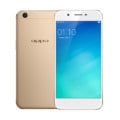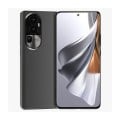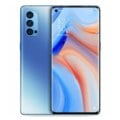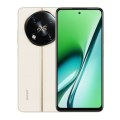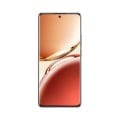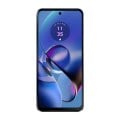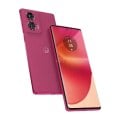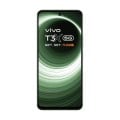Oppo Reno3 Pro 5G
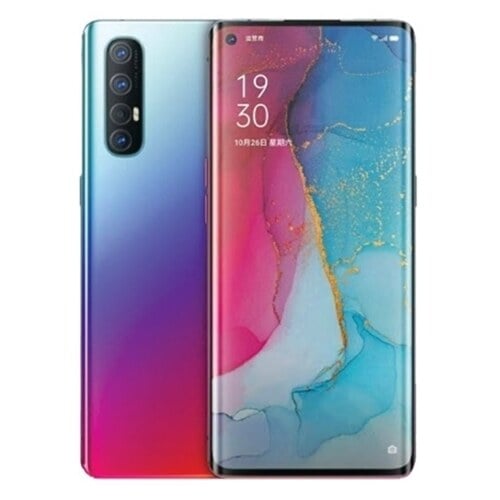


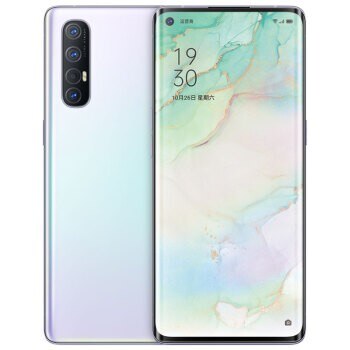
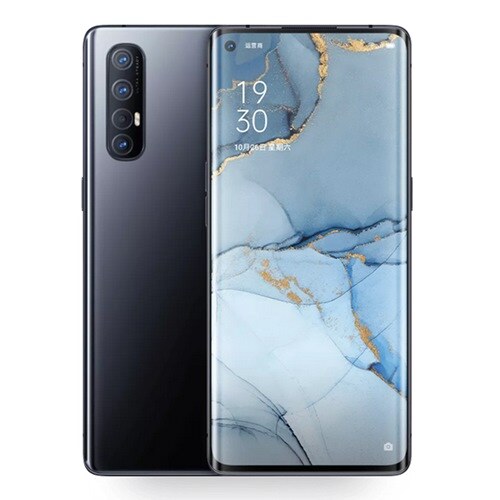
-
Processor: Qualcomm SDM765 Snapdragon 765G
-
RAM: 8 GB, 12 GB
-
Storage: 128 GB, 256 GB
-
Display: 6.5 inches
-
Camera: 48 MP (wide) + 13 MP (telephoto) + 8 MP (ultrawide) + 2 MP depth sensor
-
Battery: Li-Po 4025 mAh battery
Oppo Reno3 Pro 5G - PRICE
-
 OPPO Reno3 Pro 5G
$659.00
OPPO Reno3 Pro 5G
$659.00
View Offer
Oppo Reno 3 Pro 5G is officially launched in the month of December 2019. The smartphone’s body is built with Gorilla Glass 5, not only on the front glass but also on the back glass has Gorilla Glass 5 while the frame is made out of aluminum.
The phone is powered by Qualcomm SDM765 Snapdragon 765G Octa-core processor and pack with 8 GB and 12 GB RAM while the internal storage variants are 128 GB and 256 GB.
The dimension of the device is 159.4 x 72.4 x 7.7 mm and it weighs 171 grams which makes it light enough to carry. There are color options available such as Black, White, Starry Night, and Sunrise.
The 6.5 inches display screen has an AMOLED capacitive touchscreen that provides a resolution of 1080 x 2400 pixels at 411 PPI density. The screen is protected with the latest version of Corning Gorilla Glass 5.
The smartphone might feature quad-camera that will consist of a 48 MP (wide) + 13 MP (telephoto) + 8 MP (ultrawide) + 2 MP depth sensor cameras on the rear side with Dual-LED flash and features such as HDR and panorama.
On the front, it features 32 MP (wide) for clicking selfies. The device runs on the Android 10.0 operating system with ColorOS 7.
For the latest phones and tablets, check out giztop.com and get the best deals, coupons, offers, comparison, reviews and more!
Oppo Reno3 Pro 5G - SPECIFICATIONS
General
-
ModelOppo Reno3 Pro 5G
-
ReleasedDecember, 2019
-
StatusAvailable
Design
-
Type Design Type called form factor refers to a mobile phone's size, shape, and style as well as the layout and position of major components of phone. There are three major form factors seen in mobile phones => bar phones, folding phones and sliding phones.Bar
-
Dimensions159.4 x 72.4 x 7.7 mm
-
Weight171 Grams
-
WaterproofNo
Display
-
Display Type Display Technology => A number of display technologies and types used in mobile phones => TFT (Thin Film Transistor), IPS (In-Place Switching), OLED (Organic Light Emitting Diode), AMOLED (Active-Matrix Organic Light-Emitting Diode), Super AMOLED (an even advanced version of AMOLED), Resistive Touchscreen (Resistive touchscreens contain two layer of conductive material with a very small gap between them which acts as a resistance), Capacitive Touchsceen (Capacitive touchscreen technology consists of a layer of glass coated with a transparent conductor)AMOLED
-
Size6.5 inches
-
Resolution1080 x 2400 pixels
-
Display Colors Display Colors is refers to the number of different shades of colors that the screen is capable of displaying => 64K colors, 256K colors and 16 million colors, Obviously 16M is highest available range of colors and better than others.16M Colors
-
Pixel Density Pixel Density (PPI) is refers to the concentration of pixels on a particular display, measured in pixels per inch (ppi). Pixel density is calculated by dividing the diagonal pixel resolution of a display by its diagonal size, higher pixel density better display quality.402 ppi (pixels per inch)
-
Touch ScreenCapacitive touchscreen
-
Display Protection Display Protection => Gorilla Glass is a special alkali-aluminosilicate glass shield with exceptional damage resistance that helps protect mobile displays from scratches, drops, and bumps of everyday use, It is always better to go for a smartphone with Gorilla Glass for that added protection and peace of mind.Corning Gorilla Glass 5
-
Features800 nits max brightness
90Hz
DCI-P3
Hardware
-
CPU The main chipset of the device.Octa-core (1x2.4 GHz Kryo 475 Prime & 1x2.2 GHz Kryo 475 Gold & 6x1.8 GHz Kryo 475 Silver)
-
GPU GPU (Graphics Processing Unit) is a single-chip processor designed to rapidly manipulate and alter memory to accelerate the creation of images in a frame buffer intended for output to a display, This includes things such as lighting effects, object transformations, and 3D motion.Adreno 620
-
RAM (Memory) RAM (Random Access Memory) is a type of computer memory that can be accessed randomly, any byte of memory can be accessed without touching the preceding bytes that allows information to be stored and accessed quickly from random locations. RAM is the most common type of memory found in computer systems, smartphones, tablets and other electronic devices.8 GB, 12 GB
-
Internal Storage Internal Storage is a data storage space (flash memory) mostly used in smartphones, tablets and other electronic devices where operating system, apps, music, photos, videos, files and other user data Is stored.128 GB, 256 GB
-
Memory Card Slot Memory Card Slot is a special slot for inserting a memory card. Memory cards allow you to expand the phone's built-in memory, A memory card (sometimes called a flash memory card or a storage card) is a small storage medium used to store data such as text, pictures, audio, and video, for use on small, portable or remote computing devices such as mobile phones, mp3 players, digital cameras.No
-
Sensors Sensors are electronic components that detects and responds to some type of input from the physical environment. The specific input could be light, heat, motion, moisture, pressure and location, The output is generally a signal that is converted to use in computing systems, a location sensor, such as a GPS receiver is able to detect current location of your electronic device.Fingerprint (under display, optical), accelerometer, gyro, proximity, compass
Software
-
Operating System OS => Every computer system run on a base software called Operating System (OS). Operating System controls all basic operations of the computer (such as smartphone, PDAs, tablet computers and other handheld devices). The Operating System allows the user to install and run third party applications (apps), apps are used to add new functionality to the device.Android 10.0 + ColorOS 7
-
User Interface UI or user interface of a device is the look and feel of the on-screen menu system. How it works, its color scheme, how it responds to button presses, all of these things are part of the user interface.Yes
Camera
-
Rear Camera Camera is able to capture photographs and usually videos, The most important characteristics of a camera are the resolution (measured in megapixels), lens focus type (fixed or automatic), higher megapixel cameras are known to capture higher quality photos, but not always a good measurement of the photos quality.48 MP (wide) + 13 MP (telephoto) + 8 MP (ultrawide) + 2 MP depth sensor
-
Image2160p
-
Video2160p@30fps, 1080p@30/60fps; gyro-EIS, OIS
-
Flash Flash Light => There is commonly two types of flash lights are used in camera mobile phones, LED Flash (LED flash offers lower power consumption with drive circuitry that takes up very little room, LEDs can be strobed faster than any other light source), Xenon Flash (xenon flash produces an extremely intense full-spectrum white light for a very short duration)Dual-LED flash, HDR, panorama
-
Front Camera32 MP (wide)
Network
-
SIM SIM (Subscriber Identity Module) is a small card that contains mobile network subscriber's account information. This allows the phone using the card to attach to a mobile network. The SIM card is most commonly associated with GSM and UMTS mobile networks. Moving a SIM card from one phone to another allows a subscriber to switch mobile phones without having to contact their mobile network carrier. SIM cards can also be used by a phone to store limited amounts of data, such as phone numbers and text messages.Nano SIM
-
Dual SIMDual SIM (Nano-SIM, dual stand-by)
Connectivity
-
Wi-fi Wi-Fi is a popular wireless networking technology using radio waves to provide high-speed network connections that allows devices to communicate without cords or cables, Wi-Fi is increasingly becoming the preferred mode of internet connectivity all over the world.Wi-Fi 802.11 a/b/g/n/ac/ax, dual-band, Wi-Fi Direct, hotspot
-
USB3.1, Type-C 1.0 reversible connector, USB On-The-Go
-
GPS GPS The Global Positioning System is a satellite-based radio navigation system, GPS permits users to determine their position, velocity and the time 24 hours a day, in all weather, anywhere in the world, In order to locate your position, your device or GPS receiver must have a clear view of the sky.Yes, with A-GPS, GLONASS, GALILEO, BDS
-
NFC NFC (Near field communication) is a set of standards for smartphones and similar devices to establish peer-to-peer radio communications with each other by touching them together or bringing them into proximity, usually no more than a few inches.Yes
-
Wireless Charging Wireless Charging (Inductive Charging) uses an electromagnetic field to transfer energy between two objects. This is usually done with a charging station. Energy is sent through an inductive coupling to an electrical device, which can then use that energy to charge batteries or run the device.No
-
Headphone JackNo
Battery
-
Capacity Battery CapacityLi-Po 4025 mAh battery + Fast battery charging 30W: 50% in 20min (VOOC Flash Charge 4.0)
-
PlacementNon-Removable
Media
-
Video PlaybackYes
-
Video OutYes
-
FM RadioYes
-
Ring TonesYes
-
LoudspeakerYes
-
HandsfreeYes
Data
-
4G LTE 4G LTE bands5G band 41(2500), 78(3500); SA/NSA5G band 41(2500), 78(3500); SA/NSA
-
SpeedHSPA 42.2/5.76 Mbps, LTE-A, 5G 3.7/1.6 Gbps

